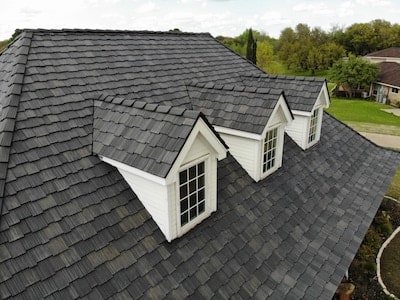It’s a question that comes up in our industry every now and then – what is roof flashing? In this blog post, we’ll define what roof flashing is and how it affects you and your home.
Let’s Define Roof Flashing
The goal of any residential roof is to protect the inside from the outside elements. Flashing is used to redirect the flow of water around potential openings. This is to prevent water from entering your home from any possible opening.
It is quite literally your roof’s last line of defense from moisture and that makes flashing a pretty important component of your home.
Where will you find flashing?
You will see flashing around:
- a chimney – this applied around the base of the chimney on the house’s exterior.
- a skylight,
- any where the roof meet the wall.
- any other opening/inconsistency on the roof.
Roof Flashing Materials
There are a few options when choosing the types of materials used for your roof flashing done
- The most common is sheet metal and copper as they as they are the most durable and compatible with the newer types of wood treatments. However, these make up the most expensive options.
- There is Aluminum which is easy to form, durable and inexpensive. However, you run the risk of corrosion if it comes in contact with alkaline materials like concrete or fiber-cement siding.
- Lead which is very pliable and soft but carries many health risks.
- Plastic flashing are inexpensive, but if exposed, they wear down quickly, which then turns out to be the most expensive option.
- Galvanized steel which come with baked enamel paint finish and with many color options.
Flashing can be bent into various shapes depending on the type of roof flashing that is required. There are several types of flashing and they are:
- Step flashing set into mortar
- Wall flashing
- Counter flashing
- Base flashing
- Self-flashing skylight
- Vent pipe flashing
- Drip edge over felt along rake
- Drip edge under felt along eaves
- Valley flashing
- Continuous flashing
- Step flashing under siding
- Back pan flashing.
- Wall diverters.
- gable diverters.
How Roof Flashing Works
Flashing is typically installed during home construction so it’s important that this is done correctly.
Why? Flashing depends heavily on gravity to work. When it works correctly, flashing helps guide water onto the regular roof materials, as opposed to cracks that can leak into your home.
The concept behind roof flashing isn’t a new one. It’s a time-tested concept to home construction and maintenance that continues to work. The materials you use for flashing make all the difference.







